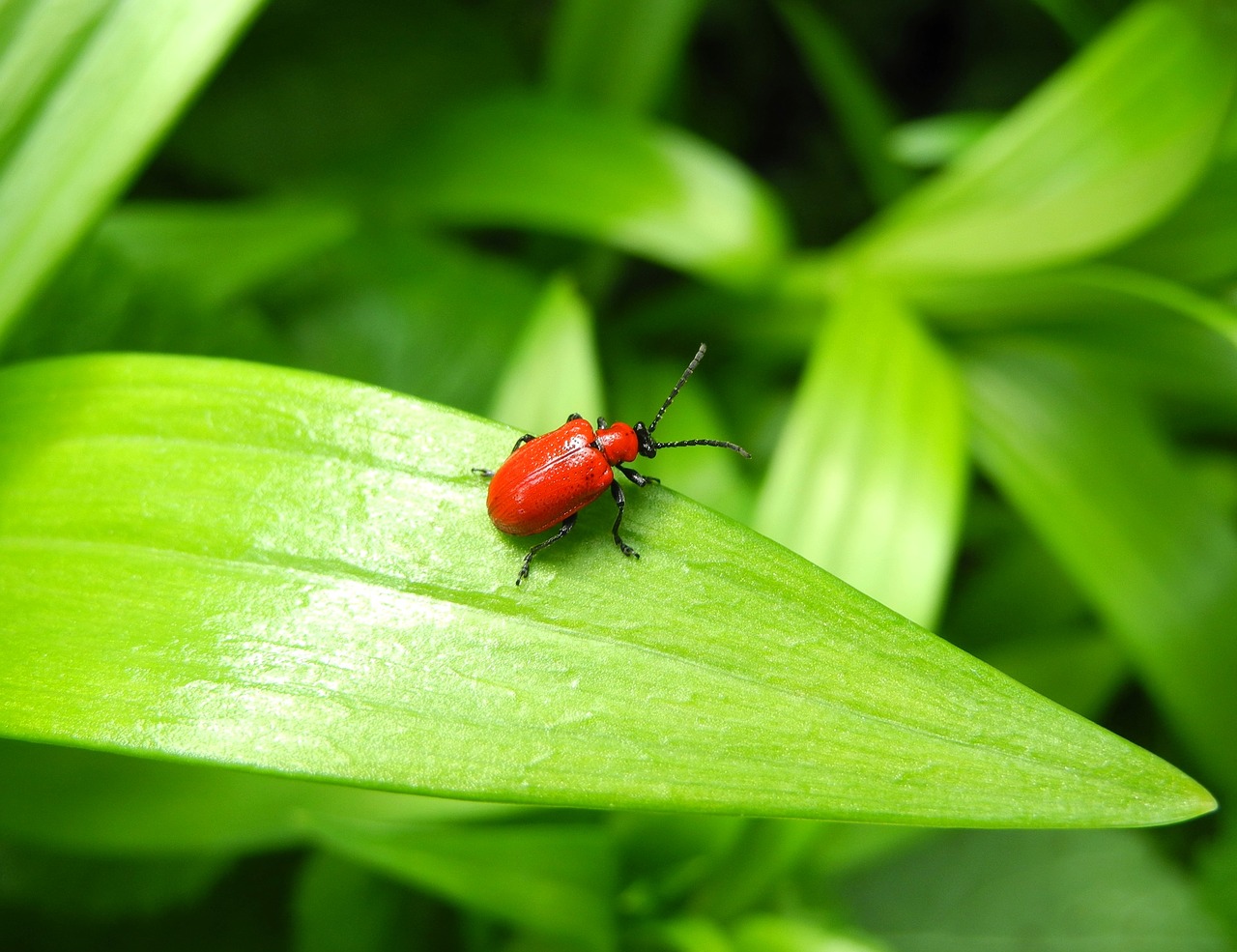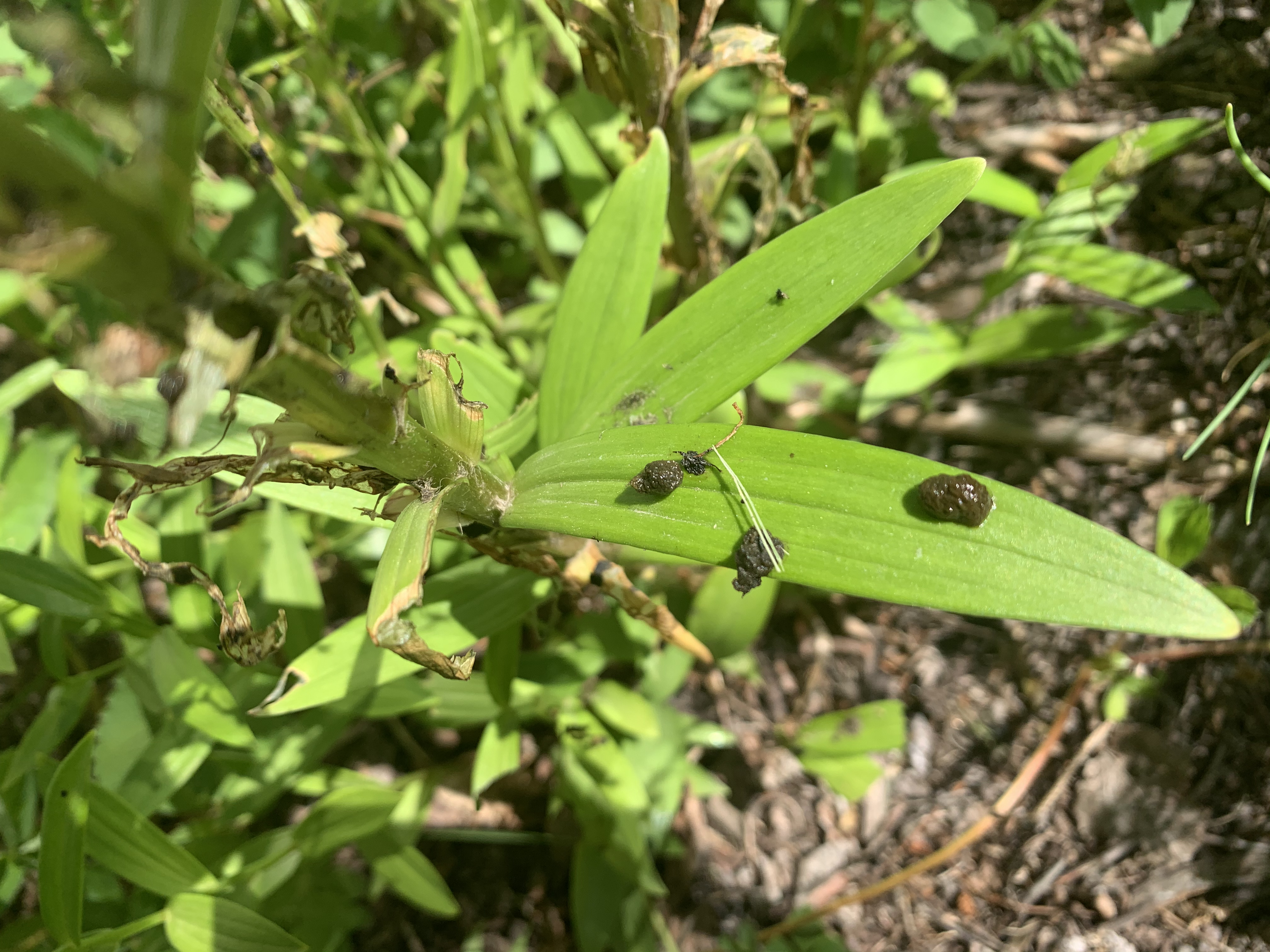
Red lily beetle, Scarlet lily beetle
Severe damage

The red lily beetle or scarlet lily leaf beetle (Lilioceris lilii) is an invasive insect that arrived in Montreal in the 1940’s and quickly spread throughout eastern Canada and the US. It is now active in Manitoba, Saskatchewan and as far west as Alberta. Numerous reports of the beetle have been documented in many areas of central Saskatchewan.
The red lily beetle feeds on any type of lily (Asiatic, martagon, oriental, tiger and trumpet) and on fritillaria. Sadly, it also feeds on the prairie lily or western red lily (Lilium philadelphicum var. andinum), the floral emblem on our provincial flag. It does not feed on daylilies, which are unrelated to lilies. It is sometimes found on other plants, but feeding damage is slight to minimal.
It damages plants by feeding on leaves, stems and buds. Left unchecked, damage is severe.
Life cycle
Control
An ounce of prevention is well worth it in this case, but you have to be vigilant throughout the growing season. These little red demons can devastate your lily bed, seemingly overnight.
Handpick and destroy
- The beetle is 6 – 8 mm long, has a rectangular body and is bright red in colour. It has a black underside, head, antennae and legs. It does not have any spots and is unlike the ladybug. Weirdly, the beetle can make a high-pitched squeaking sound when disturbed. Begin checking for adult beetles as soon as lilies begin to emerge in mid April and continue throughout the spring and summer.
- Pull mulch away from lilies to check for emerging adult beetles.
- Place a sheet of light-coloured paper or cloth on the soil around your lilies to locate beetles which drop to the ground.
- The beetles are fast-moving. A vacuum or shopvac is effective for vacuuming large numbers of beetles. If you have a wet/dry shopvac, pour a centimeter of water in the canister which helps to trap the beetles. Leave the shopvac in hot sun for a few hours to kill the beetles.
- Eggs are found on the underside of leaves. They are laid in long clusters in spring and are red or dark orange in colour.
- Simply crush them with your thumb or fold the leaf in half and press.
- You may also notice a slimy, dark blob of crud that looks a bit like bird droppings at the point where the leaf meets the stem of the lily. These are the larvae of the beetle. The larvae are covered in a fecal shield.
- Hand pick and crush. Wear gloves if you're squeamish.
Biological control
- Tetrastichus setifer, is a small, non-stinging, non-native parasitic wasp which is a natural predator of the lily beetle. The female wasp lays its eggs into any phase of the lily beetle: egg, larva, pupa or adult. The eggs hatch and develop, and kill the host. (Horrific but effective.)
- Test releases of this wasp has been done in Quebec, Manitoba and Alberta. Establishment of the wasp is uncertain at this time. (Please note, this species is not available to home gardeners.)
- As further information becomes available, we will post it on our website, Facebook and Instagram pages.
Prevention
- These beetles may hitchhike on potted lilies or gift plants like Easter lilies, especially if they were grown out of province. Examine the plant carefully for the beetle, larvae and eggs if you plan to plant it in your garden.
Report an infestation
The distribution of the red lily beetle is being tracked by the Dr. Naomi Cappuccino at Carleton University:
(Please do not report an infestation to Gardening at USask.)
What doesn't work
Diatomaceous earth is not very effective on hard-bodied insects like lily beetles. Since the larvae is covered in a protective fecal shield, diatomaceous earth as well as insecticides have very little effect.
Sources
Insect of the WEEK (May 13) - Lily LEAF BEETLE (Lilioceris lilii) and its natural enemy, Tetrastichus setifer. (2019, May 13). Retrieved March 26, 2021, from http://prairiepestmonitoring.blogspot.com/2019/05/insect-of-week-may-13-lily-leaf-beetle.html
Species Lilioceris LILII - Lily LEAF BEETLE. (n.d.). Retrieved March 26, 2021, from https://bugguide.net/node/view/20177


